Mohiniyattam mudras and facial expressions tutorial
Introduction: The Language of Grace
Mohiniyattam, the classical dance form of Kerala, is celebrated for its flowing movements, emotional storytelling, and spiritual essence. Among its most captivating aspects are mudras (hand gestures) and facial expressions (abhinaya). These are not mere additions to the dance; they are the dance. In Mohiniyattam, a raised eyebrow or a delicate turn of the wrist can convey an entire mythological tale, embodying divinity, nature, or human emotion.
This in-depth tutorial explores the structure, symbolism, and learning approach for mastering Mohiniyattam mudras and facial expressions—specifically designed for adult learners and online dance enthusiasts.
With platforms like Nayku, learners can now learn Mohiniyattam online through one-on-one classes and receive guidance from verified & experienced classical dance gurus.
The Role of Mudras in Mohiniyattam
Mudras are symbolic hand gestures used in Indian classical dance and theatre to express ideas, emotions, objects, and actions. In Mohiniyattam, mudras are drawn from Asamyuta Hastas (single-hand gestures) and Samyuta Hastas (double-hand gestures) as described in the Natya Shastra and Hastha Lakshana Deepika.
Each mudra serves as a visual language that communicates with the audience. Combined with facial expressions, it creates a complete storytelling framework.
Nayku’s Mohiniyattam classes offer training on the meanings, application, and transition techniques for each mudra.
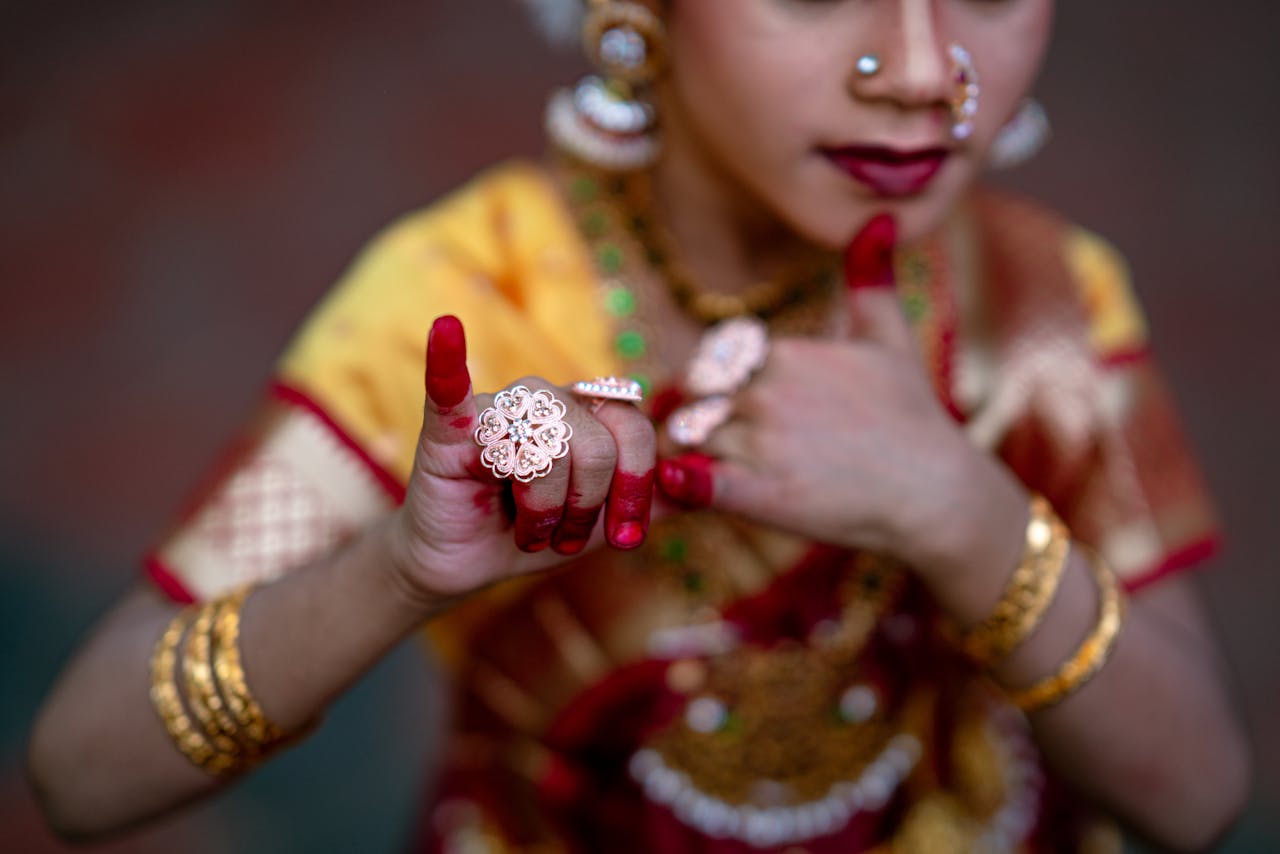
Classification of Mohiniyattam Mudras
1. Asamyuta Hastas (Single-Hand Gestures)
There are 24 Asamyuta Hastas. Some essential ones used in Mohiniyattam include:
- Pataka – flag; used to depict clouds, forest, night, etc.
- Tripataka – three parts of a flag; symbolizes a crown, tree, or fire.
- Ardhapataka – half-flag; used for leaves, dagger, or board.
- Kartari Mukha – scissors face; represents separation or lightning.
- Mayura – peacock; also denotes tilaka, bird, or beauty.
- Arala – curved; represents drinking poison or nectar.
Each of these gestures can be stylized for emotional resonance. For instance, Mayura can be gently adapted to show vanity, while Pataka can be solemn or energetic depending on the context.
In Nayku’s online sessions, each mudra is broken down into steps, shown from multiple angles, and practiced in different contexts.
2. Samyuta Hastas (Double-Hand Gestures)
These gestures involve both hands used together and include:
- Anjali – salutation
- Kapota – respectful greeting
- Karkata – linking fingers to show crowd or body stretch
- Swastika – crossed hands to represent a temple or obstruction
- Utsanga – embrace or showing modesty
- Shivalinga – symbol of Lord Shiva
Each double-hand gesture is rich in cultural and devotional significance. In Mohiniyattam, they are often performed with subtle wrist movements to preserve the dance’s fluid nature.
Tutorials via Nayku include repetition drills, Sanskrit meaning sheets, and practice assignments for adult learners.
The 5 Categories of Abhinaya (Expression)
Facial expression, or abhinaya, is the heart of Mohiniyattam. The Natya Shastra outlines five types:
- Angika Abhinaya – use of body and limbs
- Vachika Abhinaya – speech (though mostly implied in Mohiniyattam)
- Aharya Abhinaya – costume and makeup
- Satvika Abhinaya – expression of genuine emotion
- Lokadharmi Abhinaya – realistic gestures from daily life
In this article, we’ll focus on Satvika and Lokadharmi expressions, which are fundamental to Mohiniyattam.
Through Nayku, learners are introduced to these concepts using theatrical warm-ups, expressive meditation, and online feedback sessions.
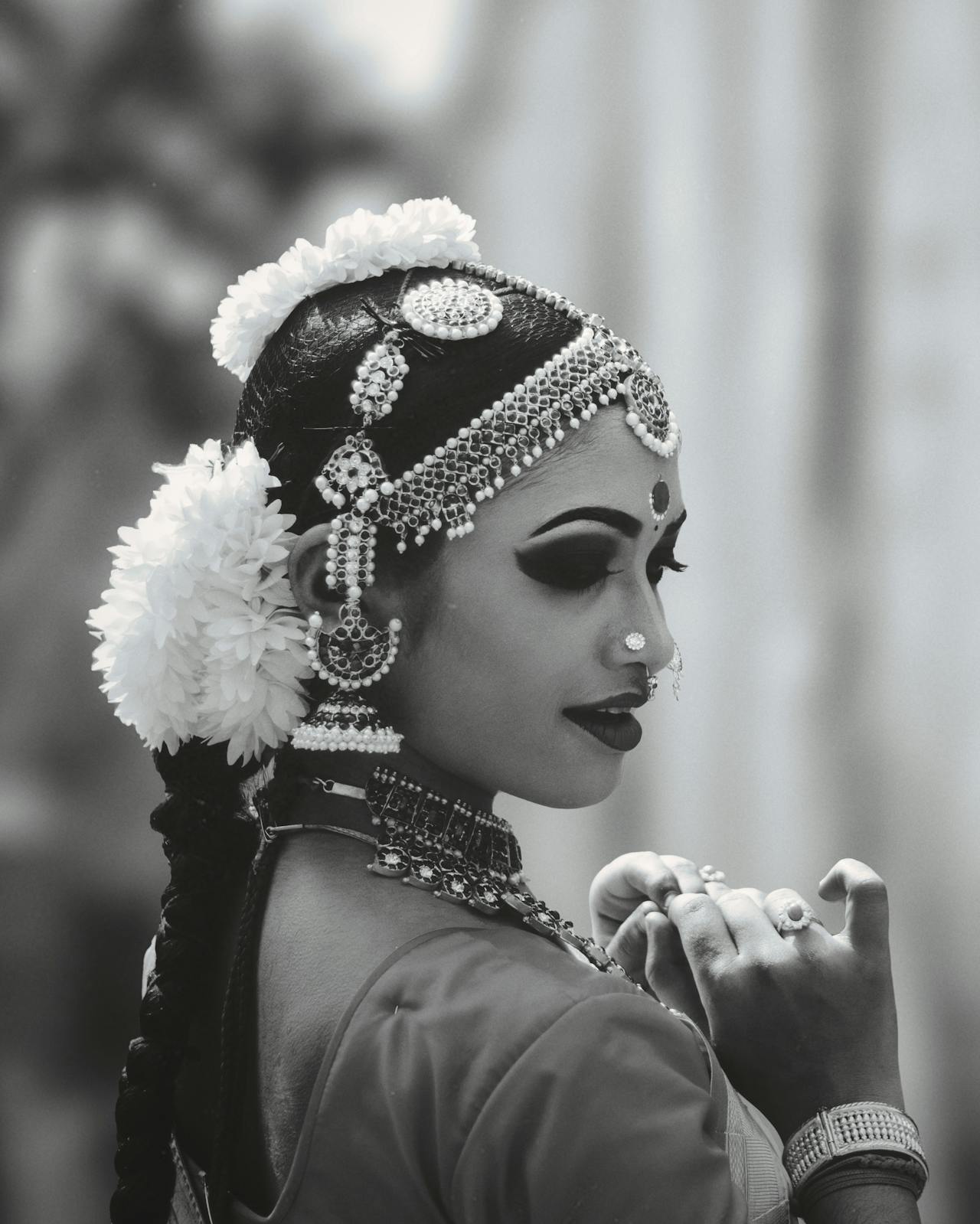
The Nine Primary Emotions (Navarasas)
Mohiniyattam abhinaya revolves around the Navarasas—nine emotional states. Each rasa is a portal into a character's soul. Understanding and embodying them is essential to mastering facial expressions.
1. Shringara (Love)
- Theme: Devotion, beauty, attraction
- Facial cues: Raised eyebrows, half-smile, glancing eyes
2. Hasya (Joy/Laughter)
- Theme: Playfulness, humor
- Facial cues: Smiling lips, laughing eyes
3. Karuna (Compassion)
- Theme: Sadness, pity
- Facial cues: Teary eyes, soft lip movements, lowered head
4. Raudra (Anger)
- Theme: Fury, justice
- Facial cues: Wide eyes, tense lips, strong chin
5. Veera (Courage)
- Theme: Bravery, heroism
- Facial cues: Steady gaze, upright posture
6. Bhayanaka (Fear)
- Theme: Anxiety, fright
- Facial cues: Flinching, darting eyes
7. Bibhatsa (Disgust)
- Theme: Rejection, distaste
- Facial cues: Twisted lips, wrinkled nose
8. Adbhuta (Wonder)
- Theme: Amazement
- Facial cues: Raised brows, open mouth, widened eyes
9. Shanta (Peace)
- Theme: Serenity, spirituality
- Facial cues: Relaxed muscles, soft gaze
Nayku uses close-up tutorials to demonstrate each rasa and gives learners time-stamped practice segments.
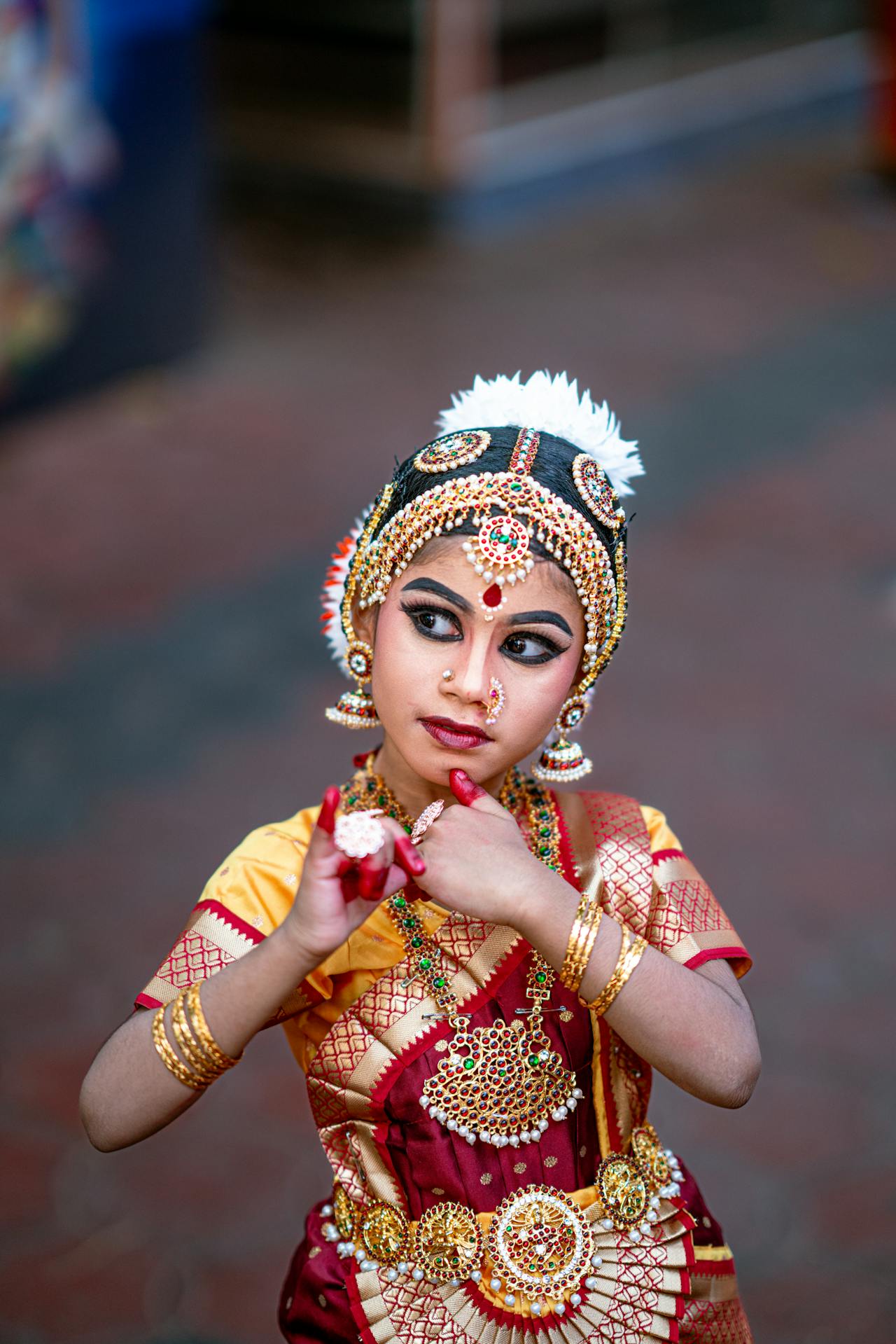
Facial Muscle Training for Mohiniyattam
Adults often find facial expressions challenging due to stiff muscles and lack of prior training. To address this:
- Start with eye exercises: up-down, side-side, circular
- Practice eyebrow lifts and forehead mobility
- Use mirror work: imitate rasas for self-feedback
- Engage in facial yoga and deep breathing before practice
Online Mohiniyattam courses on Nayku incorporate warm-up sessions to build facial flexibility and awareness gradually.
Coordinating Mudras and Facial Expressions
The magic of Mohiniyattam lies in the simultaneous delivery of mudra and abhinaya. For example:
- Mayura mudra with Shringara rasa shows feminine beauty.
- Tripataka mudra with Raudra brings out divine wrath.
- Anjali mudra with Shanta projects devotional calmness.
Adult learners are advised to first master individual components, then slowly combine them with music and rhythm. Nayku provides guided classes for layering mudras and expressions step by step.
Storytelling Through Mudra-Abhinaya Sequences
Let’s look at a classical storytelling structure in Mohiniyattam:
Example: Goddess Lakshmi’s Arrival
- Pataka: To show the ocean
- Ardhapataka: Waves and churning
- Alapadma: The blooming lotus
- Anjali: Devotees welcoming
- Shringara + Adbhuta: Lakshmi’s beauty and divine glow
In Nayku’s beginner-to-intermediate courses, such sequences are choreographed and explained with references to mythological stories.
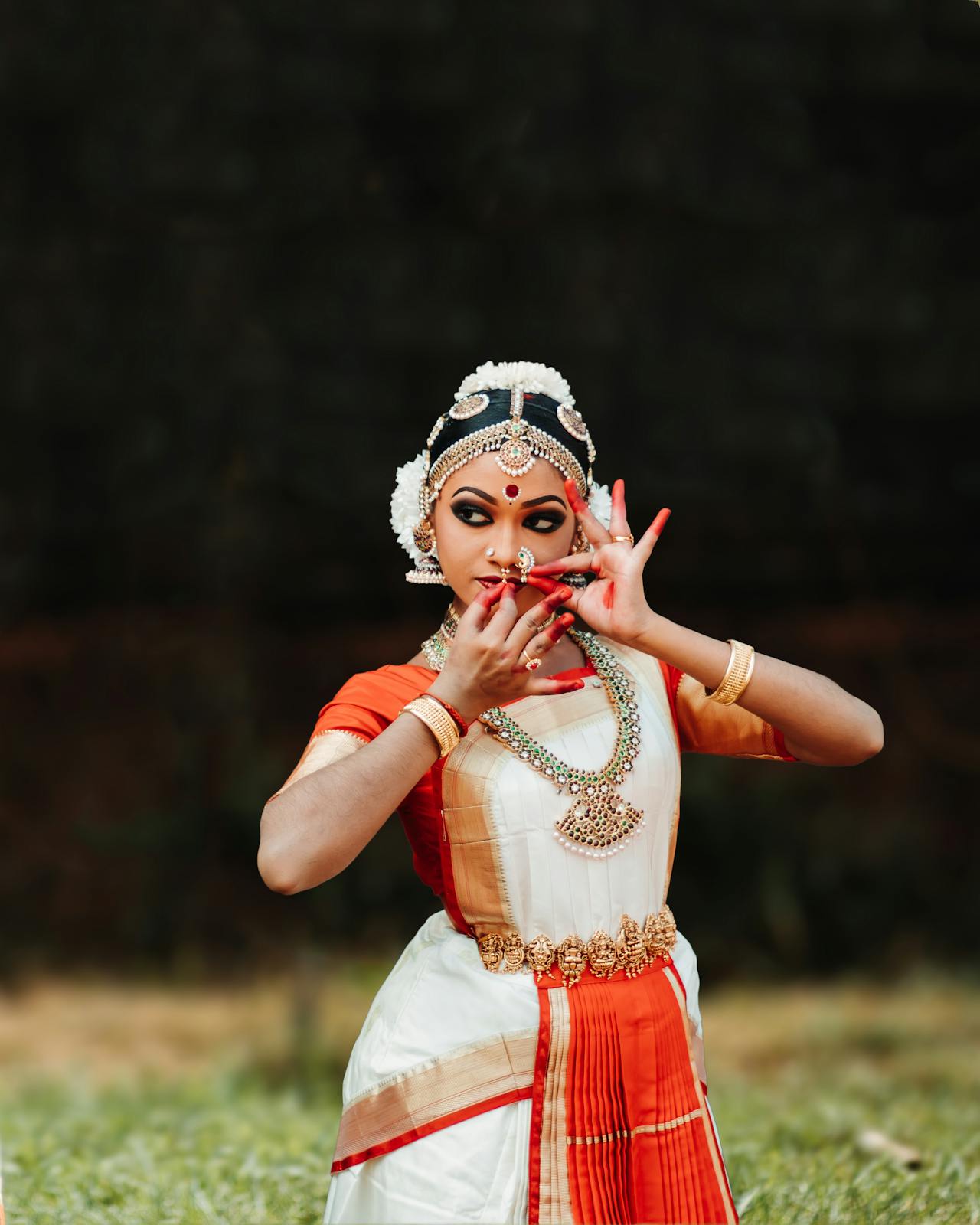
Using Mirror Feedback and Self-Assessment
Learning facial expressions and mudras online comes with unique challenges. Tips to overcome them:
- Always practice in front of a mirror
- Record yourself and watch for clarity and fluidity
- Compare your expression with the intended rasa
- Use split-screen features on video calls for live correction
Nayku incorporates bi-weekly feedback loops where learners submit videos and receive personalized evaluations from instructors.
Practice Techniques for Adults
To master Mohiniyattam mudras and facial expressions:
- Dedicate 15 minutes daily to mudra drills
- Allocate 10 minutes for Navarasa practice
- Use devotional songs as background to explore emotional depth
- Maintain a mudra-abhinaya diary for reflection
Nayku’s structured routines, practice planners, and review worksheets help adult learners stay consistent and motivated.
Integration with Mohiniyattam Items (Compositions)
As learners progress, they integrate mudras and abhinaya into classical compositions like:
- Cholkettu: Rhythmic invocations
- Varnam: Expressive centerpiece
- Padam: Emotional storytelling
- Ashtapadi: Devotional poetry
- Thillana: Joyful finale
Nayku's advanced modules feature performance coaching for these items with a focus on mudra-abhinaya synergy.
Addressing Common Beginner Mistakes
- Rushing Mudras: Take time with transitions.
- Blank Face: Always match gesture with emotion.
- Overacting: Be subtle; Mohiniyattam is gentle.
- Mirroring Error: Avoid left-right confusion in online learning.
- Drooping Hands: Maintain energy through fingers.
Nayku mentors provide real-time corrections and even offline annotated videos to help resolve such issues.
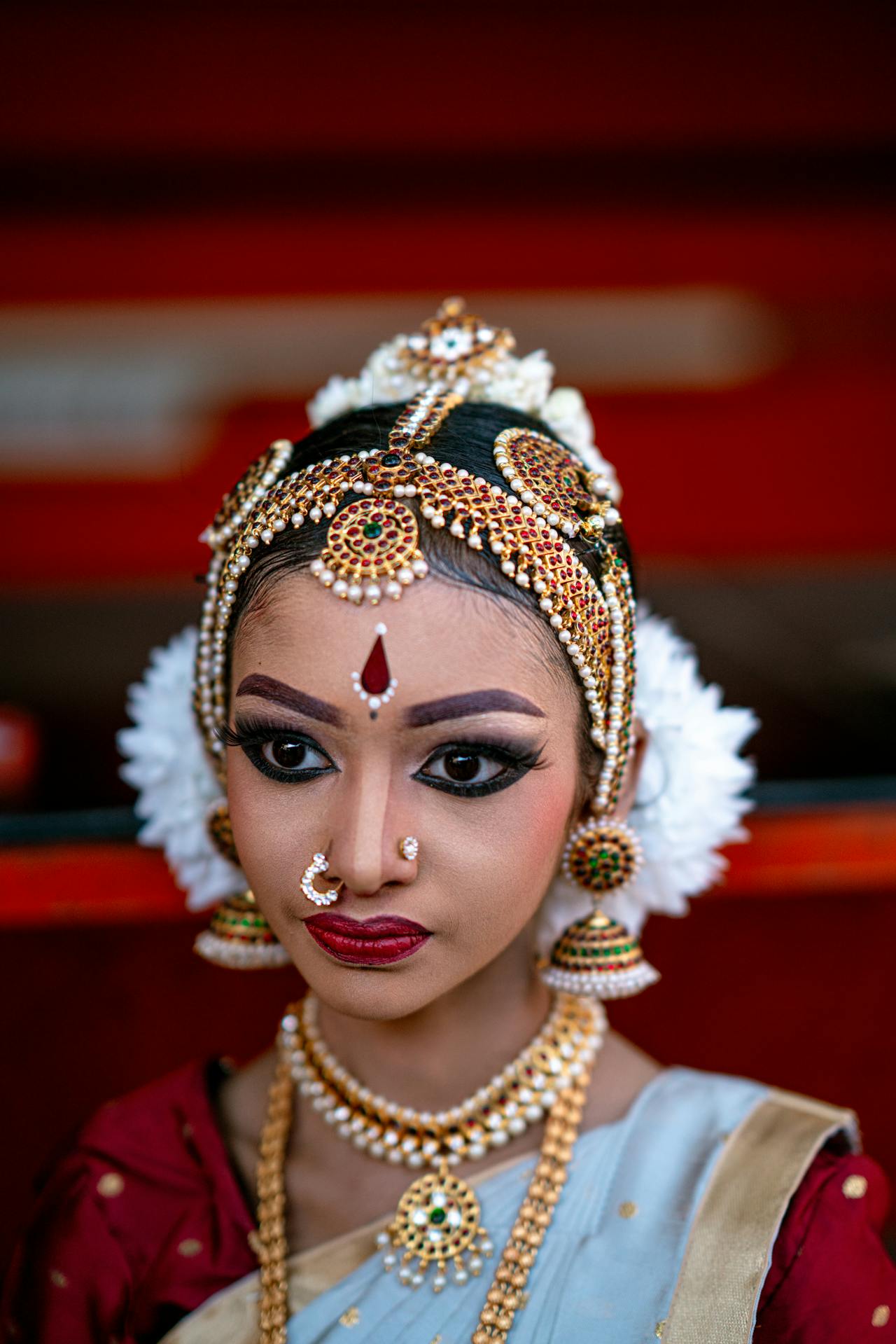
Inspirational Success Stories
- Ananya, 35, Delhi: “Learning expressions gave me a voice I never had. Now, I perform for temple festivals.”
- Priya, 42, California: “Nayku’s abhinaya sessions helped me rediscover my spiritual side.”
- Meenakshi, 50, Chennai: “Mudras became my meditation. I practice them even during breaks at work.”
Conclusion: The Inner Journey Through Gesture and Expression
Mohiniyattam is not just about technique—it’s about transformation. Mudras and facial expressions create a channel for devotion, identity, and healing. For adult learners, they offer a pathway to reimagine self-expression and connect with something timeless.
Thanks to digital platforms like Nayku, learning these intricate elements has never been more accessible. Whether you’re just starting or rediscovering your roots, the beauty of Mohiniyattam awaits—one gesture and one glance at a time.
Related Articles
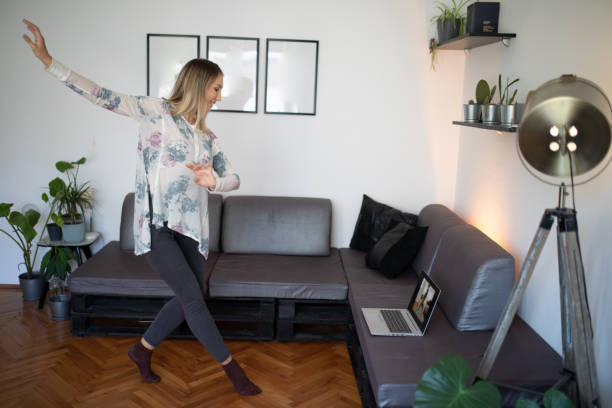
Dance Learning App For Free Download with Experienced Teachers
Nayku is your go-to dance learning app for free download. Connect with experienced teachers and enjo...
Read More
Best Dance Learning App For Beginners in 2026
Nayku is the best dance learning app for beginners in 2026, offering live online dance classes with...
Read More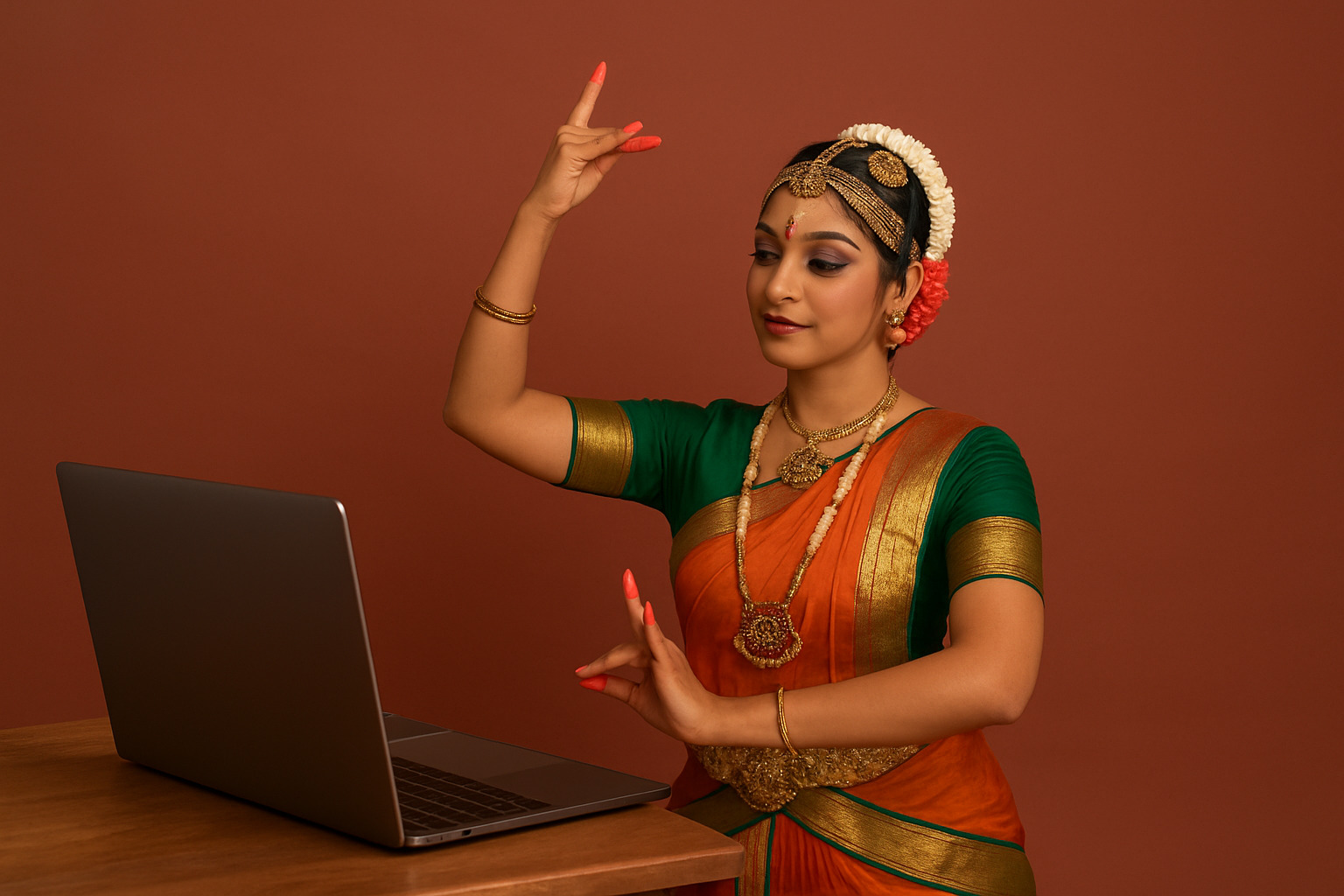
Best Bharatanatyam Dance Classes Online in Marysville California
Discover the best online Bharatanatyam classes in Marysville with Nayku. Join expert gurus, learn ex...
Read More
